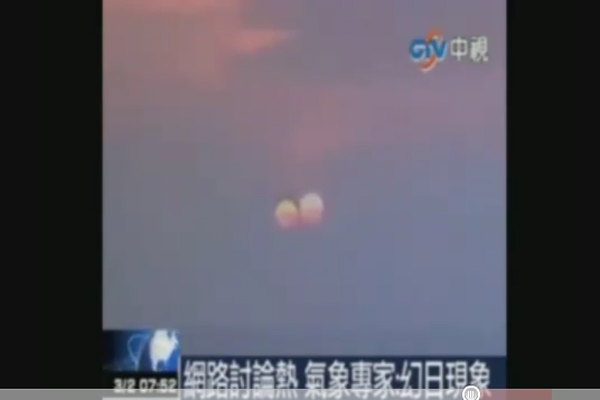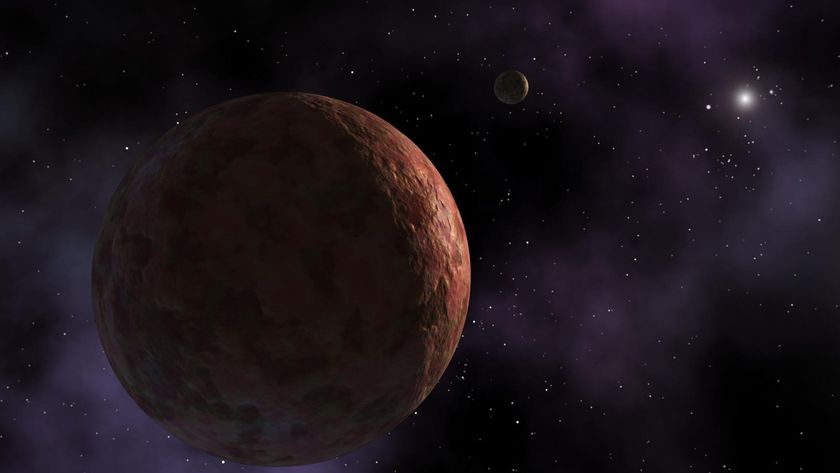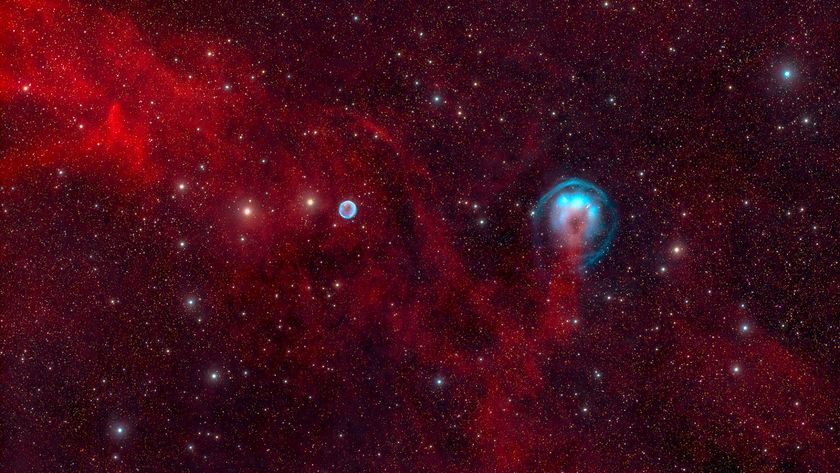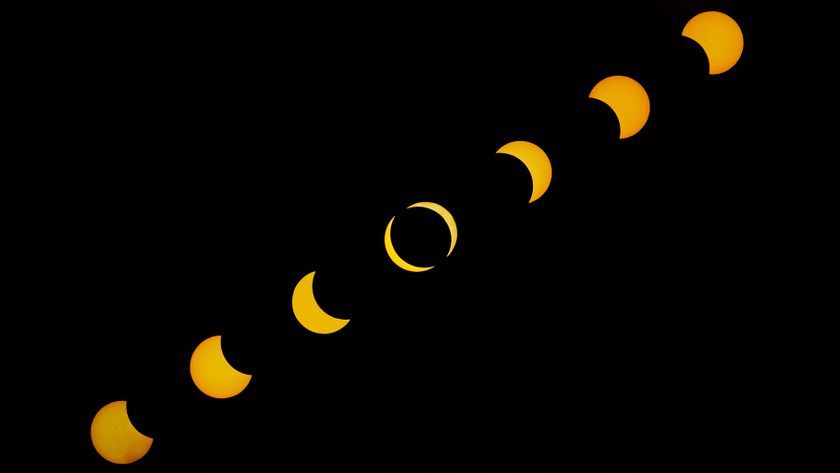China's 'Two Suns' Video Unexplained By Science

Weeks after a story shot across the Web claiming that the imminent explosion of a nearby star would result in the appearance of a second sun in the sky – a story that was later debunked – two suns were caught on camera yesterday in China. The suns – one fuzzy and orange, the other a crisp yellow orb – appeared side-by-side, one slightly higher than the other.
What's going on? Life's Little Mysteries, a sister site to Space.com, asked Jim Kaler, the University of Illinois astronomer who squelched the excitement over the aforementioned exploding Betelgeuse and who has written books on the day and night sky. The double sun image is an effect of optical refraction, Kaler said, but it's a "pretty darn rare" one, and one not fully explained by science.
"I doubt it's been computer modeled," he said. "There must have been some blob of atmosphere somewhere that caused this truly spectacular phenomenon, which in a sense is a mirage." [Amazing Sun Photos From Space]
Mirages appear when particles in the atmosphere refract, or bend, light. This typically happens near the horizon, where air is thicker, though, and mirages are usually aligned vertically above or below the original source of the light – not beside it, like in the video. It's possible, Kaler said, that an unusually thick patch of atmosphere wandered in front of the sun to create the unusual effect.
Previous sightings of horizontally-aligned double images of the sun and moon are recorded in a book called "Light and Color in the Outdoors" (English edition: Springer 1993) by the famous Flemish astronomer Marcel Minnaert, which remains the most complete reference on double suns. "So many other instances have been reported that there is no longer any doubt about … observations of sun and mock sun(s) being at exactly the same altitude," Minnaert wrote.
"The case of a mock sun 3 degrees and 25 arc-seconds to the left of the nearly set sun sounds incredible but has been recorded photographically." Indeed, Minnaert's description sounds nearly identical to the scene in question.
He goes on to state that the double or multiple image phenomena are produced by abnormal refraction, but that "it remains extraordinary that the images of the sun and moon were sharp and of the same size as the real sun and moon."
Get the Space.com Newsletter
Breaking space news, the latest updates on rocket launches, skywatching events and more!
To check whether more has been learned about the double sun effect since the time of Minnaert's writing, Life's Little Mysteries consulted several atmospheric optics experts. None of them had ever seen anything quite like the effect shown in the video.
"This is not a common optical phenomenon that we're seeing here," said Grant Perry, an atmospheric scientist at the University of Wisconsin Cooperative Institute for Satellite and Meteorological Studies. "I'm asking myself if this is an artifact of the lens, but if that were the case – if it's reflections of the lens elements – then the images would move in relation to each other as the camera moves," Perry said. "But that doesn't happen."
In terms of an optical explanation, he said, "You would have to assume it is particles of ice or something in the atmosphere aligned in such a way that they would refract the sunlight at that very small angle, but only in one direction. It would require some fairly peculiar characteristics."
Several related atmospheric optical effects are fully explained by science. Sun dogs, sunset mirages, sun pillars and sun halos are all relatively common and well understood. But not this effect.
"It's very intriguing," said Kaler.
This article was provided by Life's Little Mysteries, a sister site to SPACE.com. Follow Natalie Wolchover on Twitter @nattyover.
Join our Space Forums to keep talking space on the latest missions, night sky and more! And if you have a news tip, correction or comment, let us know at: community@space.com.

Natalie Wolchover was a staff writer for Live Science and a contributor to Space.com from 2010 to 2012. She is now a senior writer and editor at Quanta Magazine, where she specializes in the physical sciences. Her writing has appeared in publications including Popular Science and Nature and has been included in The Best American Science and Nature Writing. She holds a bachelor's degree in physics from Tufts University and has studied physics at the University of California, Berkeley.










